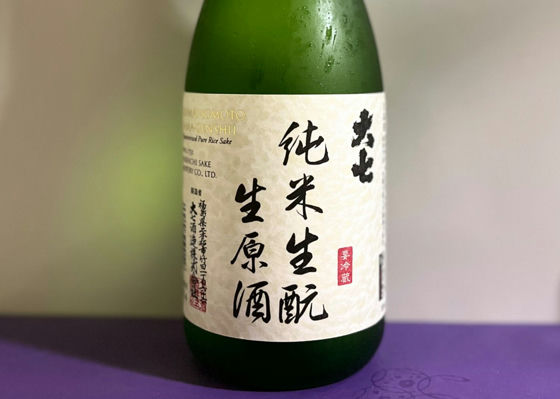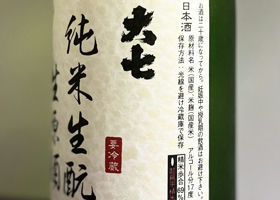


ことり
The Daishichi Sake Brewery is dedicated to the most orthodox and traditional brewing method of sake, the "Namahashi-zukuri" method.
I was curious about the "creamy" flavor in a previous talk between Sakeran and bouken 👀.
The other day, I came across it at the sake store where I bought the Mita Melon 🤗After much deliberation, I chose the Junmai Nama Hashimoto Nama Sake.
The aroma of the just-opened bottle was slightly oily magic mucky. The aroma is rich sweet and sour, like dried apricots or raisins with a lactic acidity. Slightly woody. It also has a caramel and nutty flavor and richness, with an aged aroma and taste reminiscent of a fruit tart lined with Western praline...it was impressive and delicious.
Rice used: Gohyakumangoku, others (Fukushima, Toyama)
Polishing ratio : Kake rice 69%, Koji rice 65% (super flat polished)
Yeast : Kyokai No.7
Alcohol Content : 17
Sake meter degree: +3
Acidity: 1.9
Amino Acidity : 1.6
Japanese>English
ジェイ&ノビィ
Hey, Kotori-san 😃.
You also make use of the sakéwa information 👍.
Another great expression 👏.
Hmm! Next up is finally ❗️ let's see what's coming 🤗
Japanese>English
ことり
Jay & Nobby, good evening😃😃Next up at last... ❓(O_O) Really - I was only looking at the ‼️ map painting 👀 thank you 😊.
Japanese>English
さけラン
Oh?
You are drinking Daishichi 😆!
Hmmm...it looks like you enjoyed the complex flavor!
I'd like to try it again next year if I see it again.
I don't know about the other Daishichi though 💧.
Japanese>English
ことり
Hi, Mr. Sakeran 😃I heard from the owner that the smell of freshly made solvents will disappear and become tastier as it is laid out at the right temperature 🤔How true is that? If I encounter something that tastes or smells 🥵, I'll try to let it rest... 😅It's hard to find the taste I like.
Japanese>English